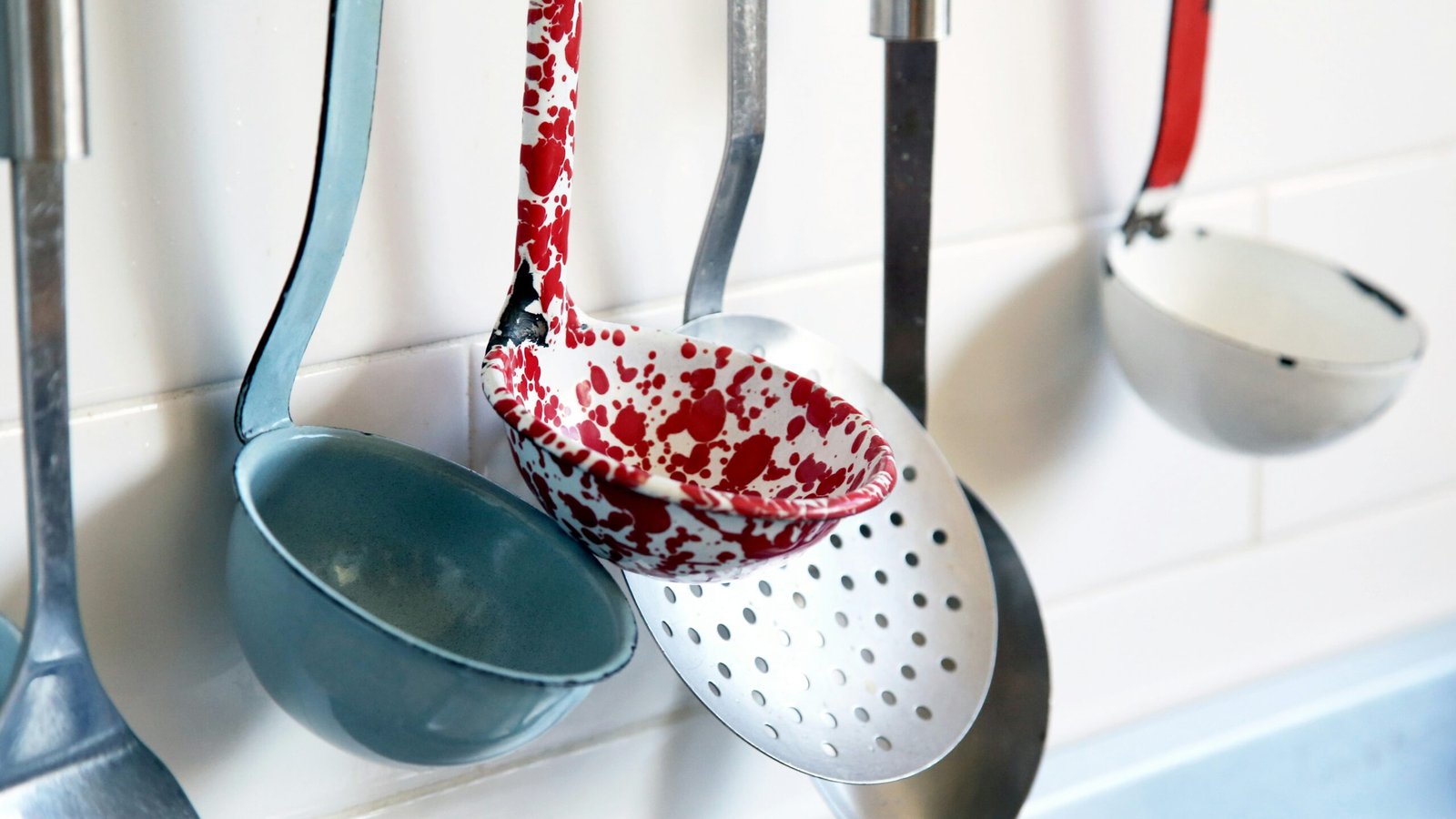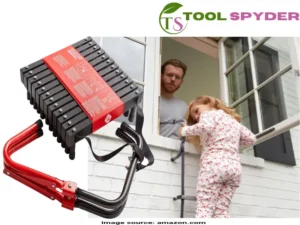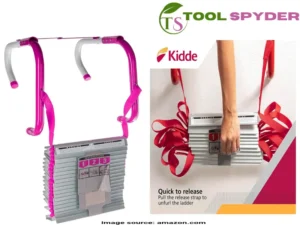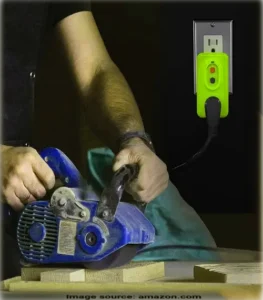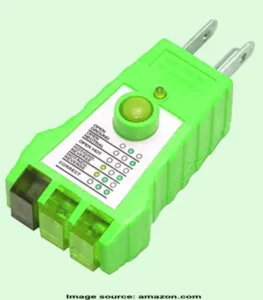Discover essential tools for comprehensive home inspection tools, including digital moisture meters, thermal imaging cameras, electrical testers, mold detection kits, and radon test kits. These 13 house inspection tools help you so much Equip yourself with the right tools to detect moisture, heat variations, electrical issues, mold, and radon gas, ensuring the safety and integrity of your property. Learn about the features, operation, and price ranges of these house inspection tools.
Top 13 house inspection tools
1. Digital Moisture Meter
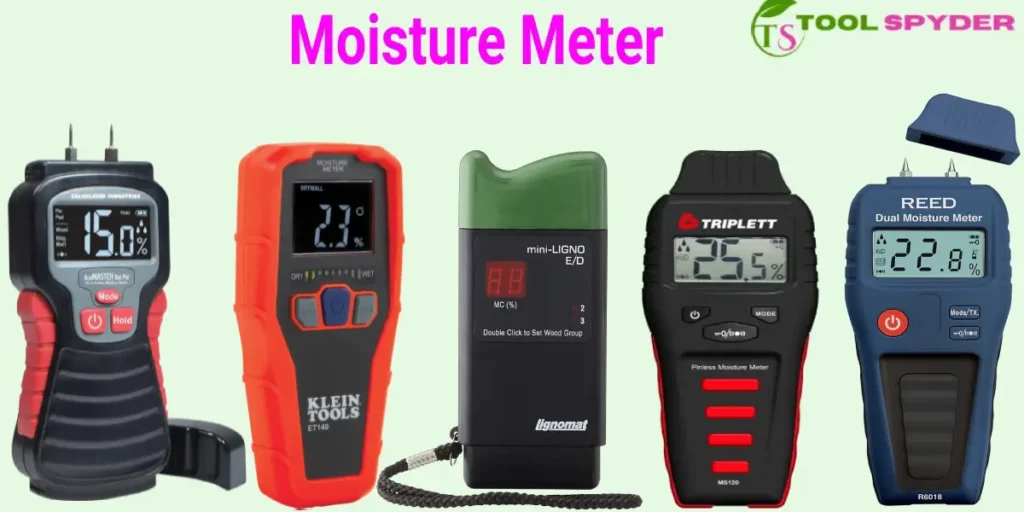
A digital moisture meter is an indispensable tool in the arsenal of any home inspector. This electronic measurement device is designed to assess moisture levels in various materials, making it crucial for identifying potential water damage in walls, floors, and other structural components. By pinpointing areas with elevated moisture content, it helps in early detection and mitigation of potentially severe issues like mold growth and structural decay.
How To Use
The digital moisture meter is a hand-held device featuring a user-friendly digital display that provides accurate readings. To operate, simply place the sensor on the material in question. The device will then measure the moisture content and display the results instantly, allowing inspectors to quickly assess the extent of moisture penetration. This straightforward process ensures that even those new to using a moisture meter can effectively identify problem areas.
Type of moisture meter
Generally there are two type of moisture meter in the market. One is pin type and another is pin less moisture meter. In spite of having difference between pin type and pinless moisture meters, they are suitable in their respective fields. There are various models available, catering to different needs and budgets. Entry-level digital moisture meters typically range from $30 to $60 and offer basic functionality suitable for occasional use. Mid-range models, priced between $60 and $120, often include additional features such as data logging and more precise calibration. High-end devices, which can cost up to $200, provide advanced capabilities like Bluetooth connectivity, comprehensive data analysis, and superior accuracy. The choice of model depends on the frequency of use and specific requirements of the inspection tasks.
Final Thought
Incorporating the digital moisture meter into your house inspection toolkit not only enhances the thoroughness of the inspection but also adds a layer of reliability to the findings. Whether you are a professional home inspector or a homeowner conducting a self-assessment, understanding moisture levels is paramount for maintaining the integrity and safety of the property. Investing in a quality digital moisture meter is a prudent decision that pays dividends in safeguarding your home against the hidden dangers of water damage.
2. Thermal Imaging Camera
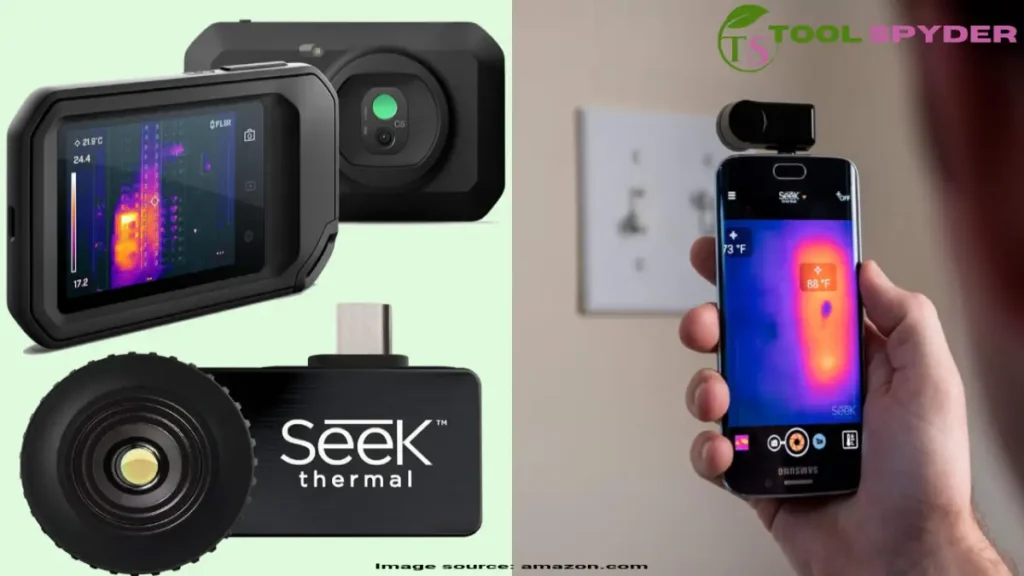
Thermal imaging cameras have become an indispensable tool for modern home inspections due to their ability to detect heat variations. These devices are specifically designed to reveal temperature differences, making them highly effective in identifying insulation issues, leaks, and other thermal anomalies that are not visible to the naked eye. By capturing infrared images, thermal imaging cameras provide a visual representation of heat distribution within a structure, thereby highlighting areas where energy loss or moisture intrusion may be occurring.
How To Use
Utilizing a thermal imaging camera is relatively straightforward. To begin, turn on the device and calibrate it according to the manufacturer’s instructions. Point the camera at the area you wish to inspect, and observe the live thermal image displayed on the screen. Warmer areas will typically appear in shades of red, yellow, or orange, while cooler areas will be represented by blue or purple hues. This color-coded imagery allows for quick and accurate identification of potential problem spots, such as gaps in insulation or hidden water leaks behind walls.
Type of Thermal Imaging Camera
Thermal imaging cameras come in various models and price ranges, generally costing between $200 and $1,500. Entry-level models are suitable for basic inspections and offer essential features, such as adjustable emissivity settings and built-in digital cameras for capturing visual references. On the other hand, high-end models provide advanced functionalities, including higher resolution sensors, Wi-Fi connectivity for real-time data sharing, and extended temperature ranges for more precise measurements.
Final Thought
Overall, investing in a thermal imaging camera can significantly enhance the thoroughness and accuracy of home inspections. By enabling the detection of hidden issues, these devices contribute to more informed decision-making and proactive maintenance, ultimately safeguarding the structural integrity and energy efficiency of residential properties.
3. Electrical Testers
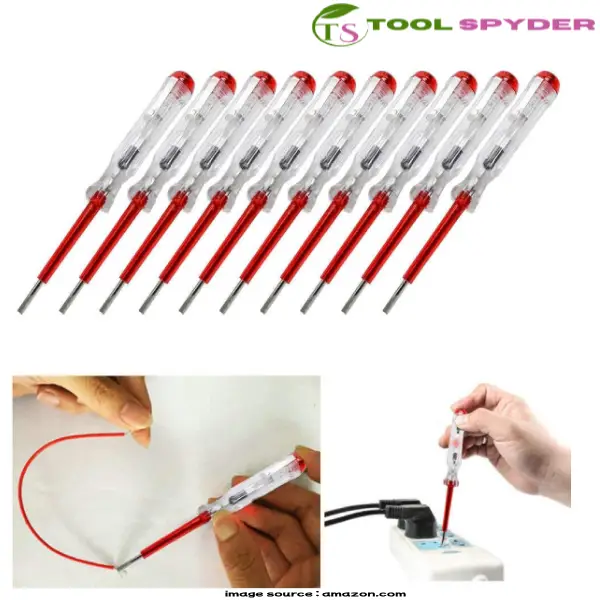
Electrical testers are indispensable tools in the arsenal of a home inspector, primarily utilized to determine the presence of electrical voltage within a circuit. Ensuring safety and functionality, these devices provide a crucial verification process for electrical systems in homes, confirming that circuits are live and operational. Electrical testers come in various forms, but all share a common goal: to detect voltage and help prevent potential electrical hazards
How To Use
The typical electrical tester is a compact device, often featuring either an array of lights or a digital display to indicate voltage presence. The design focuses on simplicity and ease of use, making it accessible even for those with minimal technical knowledge. The operation of an electrical tester involves touching the probes of the device to the wires or outlets in question. When voltage is detected, the tester will provide a visual or audible indication, alerting the user to the presence of electrical current.
Type of Electrical Testers
There are several types of electrical testers available on the market, each tailored to specific needs and preferences. Basic models, which are budget-friendly, often employ a series of lights to indicate voltage levels. These testers are typically priced between $10 and $20. On the higher end of the spectrum, more advanced models feature digital displays and additional functionalities such as continuity testing and non-contact voltage detection, with prices ranging from $30 to $50. Regardless of the price point, investing in a reliable electrical tester is a wise decision for anyone involved in home inspections, as it significantly enhances safety and efficiency.
Final Thought
In summary, electrical testers are essential tools for ensuring the safety and functionality of a home’s electrical system. By providing a clear indication of voltage presence, they help prevent electrical hazards and ensure that circuits are live and operational. Whether opting for a basic model or a more sophisticated device, these tools are a vital component of any comprehensive home inspection kit.
4. Electrical Circuit Analyzer
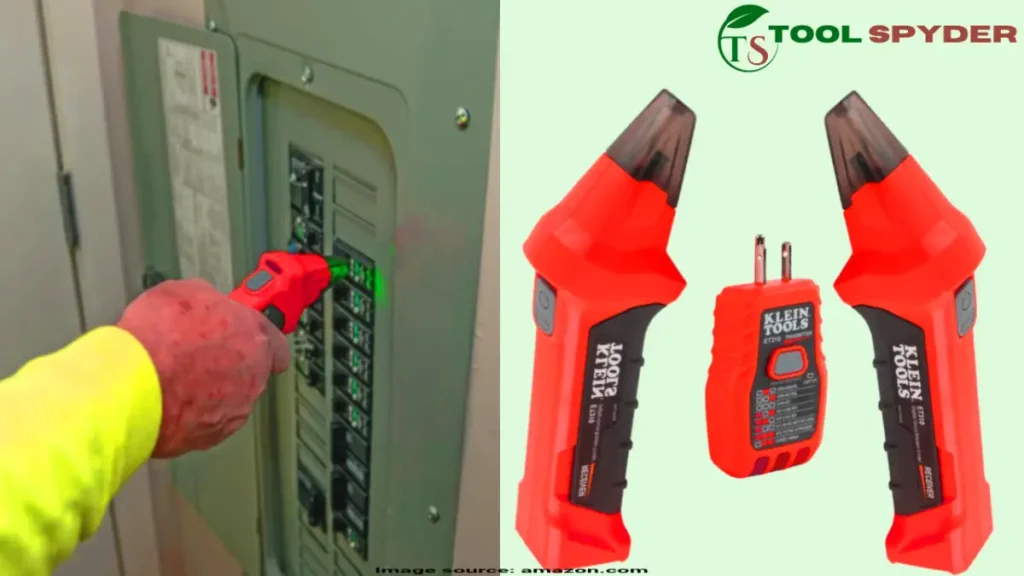
An electrical circuit analyzer is an indispensable tool for any comprehensive home inspection, particularly when evaluating the condition of a property’s electrical systems. This diagnostic tool is designed to assess the status of electrical circuits, ensuring safety and functionality. By identifying wiring issues such as improper grounding, reversed polarity, or open circuits, a circuit analyzer helps inspectors pinpoint potential hazards that could lead to electrical failures or even fires.
How To Use
The typical circuit analyzer is a handheld device equipped with multiple testing functions. Its compact design makes it easy to carry and operate, rendering it an essential addition to any inspector’s toolkit. To use the device, an inspector simply plugs it into an electrical outlet. Once connected, the analyzer provides immediate feedback on the circuit’s condition, often through a combination of lights and digital readouts. This instant diagnostic capability allows for quick and accurate assessments, enabling inspectors to make informed decisions about the safety and compliance of the home’s electrical systems.
Type of ELECTRICAL CIRCUIT ANALYZER
When considering the purchase of an electrical circuit analyzer, potential buyers will find a range of options priced between $50 and $200. The price variation typically reflects differences in functionality, durability, and brand reputation. Higher-end models may offer additional features such as GFCI (Ground Fault Circuit Interrupter) testing, digital displays, and enhanced diagnostic capabilities, making them suitable for more complex inspection needs. Conversely, basic models still provide reliable performance for standard assessment tasks, making them a cost-effective choice for those on a budget.
Final Thought
Overall, an electrical circuit analyzer is a vital tool for identifying and rectifying electrical issues during home inspections. Its ease of use, combined with its critical diagnostic functions, underscores its importance in ensuring the safety and integrity of residential electrical systems. Whether for professional inspectors or diligent homeowners, investing in a quality circuit analyzer is a prudent decision that enhances the thoroughness and reliability of home inspections.
5. Mold Detection Kits

Mold detection kits are vital tools for identifying the presence of mold in homes. Mold growth can lead to a myriad of health issues, including respiratory problems, allergies, and other severe health complications. Therefore, having a reliable method to detect mold is crucial for maintaining a healthy living environment.
How To Use
To use a mold detection kit, you begin by collecting samples from various surfaces in your home where mold is suspected. The swabs provided in the kit are used to gather these samples, ensuring that you capture any potential mold spores. After collecting the samples, they are carefully packaged and dispatched to a laboratory for analysis. The lab processes the samples and provides a comprehensive report detailing the type and concentration of mold present in your home.
Type of Mold Detection Kits
The price range for mold detection kits varies, typically falling between $10 and $40. This makes them an affordable option for homeowners who wish to conduct preliminary mold inspections before deciding whether professional remediation services are necessary. Investing in a mold detection kit can be a cost-effective first step towards ensuring the air quality and overall health of your living space.
Final Thought
In conclusion, mold detection kits serve as an essential tool in the arsenal of house inspection tools. They offer a user-friendly and economical way to identify potential mold problems, enabling homeowners to take timely and appropriate action. By integrating mold detection kits into your home inspection routine, you can safeguard your household’s health and well-being.
6. Radon Test Kits
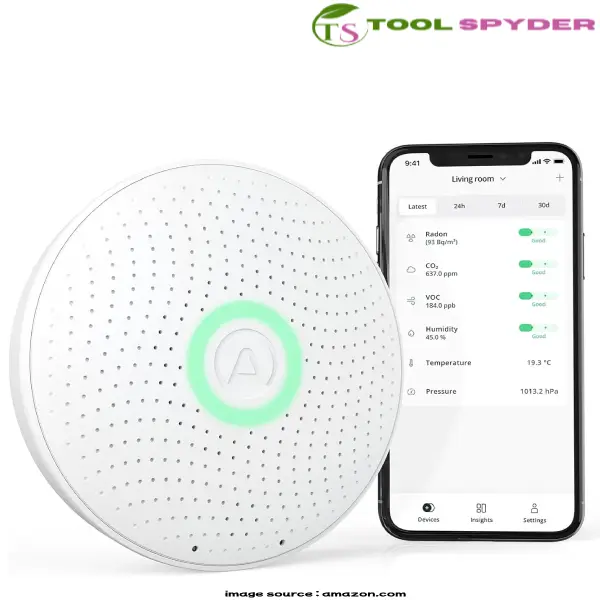
Radon test kits are essential house inspection tools aimed at measuring the levels of radon gas, a harmful radioactive substance that can accumulate within homes. Radon lacks color, odor, and taste, rendering it undetectable without specialized equipment. Prolonged exposure to elevated radon levels is a significant health risk, linked primarily to lung cancer, making the use of radon test kits indispensable for home safety.
How To Use
A typical radon test kit includes a radon collector and detailed instructions for use. The process is straightforward and user-friendly, making it accessible for homeowners without specialized training. To use the kit, place the radon collector in the lowest livable area of your home, such as a basement or ground floor, where radon levels are usually highest. The collector should remain undisturbed for a specific period, typically ranging from a few days to up to a week, depending on the product’s guidelines.
Type of Radon Test Kits
There are different types of radon test kits available on the market, catering to various testing needs and preferences. Some kits are designed for short-term testing, while others are meant for long-term monitoring. The price of these kits typically ranges from $15 to $50, making them a cost-effective option for ensuring the safety of your home environment.
Final Thought
Given the severe health implications of radon exposure, investing in a reliable radon test kit is a prudent decision. By regularly testing and monitoring radon levels, homeowners can take proactive steps to safeguard their health and well-being, thereby enhancing the overall safety of their living spaces.
7. Gas Leak Detectors
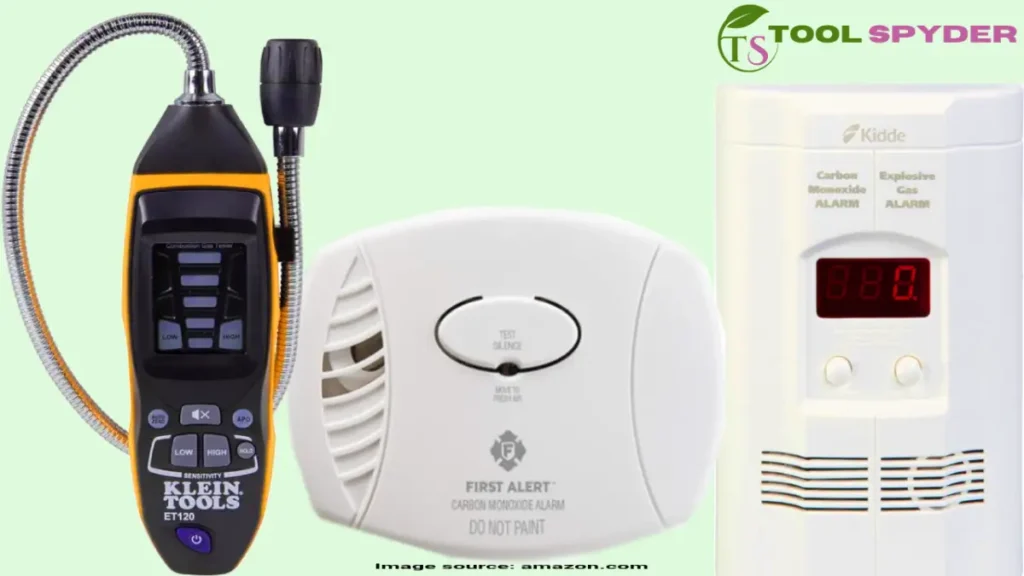
Gas leak detectors are essential safety tools for any home inspection. These devices are designed to identify the presence of harmful gases, such as natural gas or propane, which can build up and pose serious hazards to inhabitants. By detecting gas leaks early, homeowners can take prompt action to mitigate risks, thus ensuring the safety and well-being of all occupants.
How To Use
Using a gas leak detector is relatively straightforward. To operate, turn on the device and move the sensor slowly around areas where gas leaks are likely to occur, such as near gas lines, appliances, and fittings. The detector will signal if it identifies a gas leak, allowing you to pinpoint the source and address it promptly. Regular use of a gas leak detector is recommended, especially after installing new gas appliances or after performing any maintenance work on existing gas lines.
Type of Gas Leak Detectors
As a safety device, gas leak detectors are indispensable in preventing potentially catastrophic incidents. They come in various models and price ranges to suit different needs and budgets. Basic models, which are often sufficient for standard home inspections, typically cost between $20 and $50. More advanced detectors, offering additional features such as digital readouts or enhanced sensitivity, can range from $50 to $100. Investing in a reliable gas leak detector is a small price to pay for the peace of mind and safety it provides.
Final Thought
The typical gas leak detector is a handheld device equipped with a sensitive sensor that can identify even trace amounts of gas in the air. These detectors often come with an audible alarm and visual indicators to alert users to the presence of gas. Some advanced models may also feature digital displays that provide precise readings of gas concentration levels.
8. Flashlight
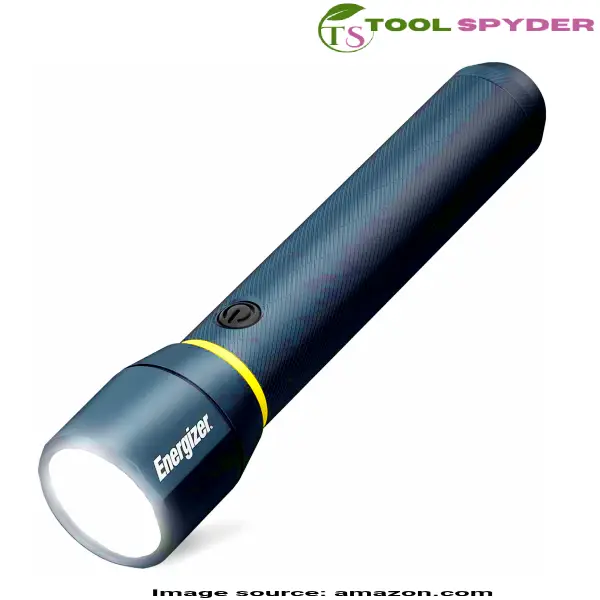
A flashlight is an indispensable tool in any home inspector’s arsenal, primarily because it provides a reliable source of portable light. This tool is crucial when examining dark or poorly lit areas such as basements, attics, crawl spaces, and behind appliances where natural light is insufficient. The hand-held light source ensures that inspectors can accurately identify any potential issues, making it easier to deliver comprehensive and precise inspection reports.
How To Use
To use a flashlight effectively, one needs to simply turn it on and direct the light beam towards the area requiring inspection. Modern flashlights can change how bright they shine. Inspectors can adjust the light to match what they need. This flexibility enhances the inspector’s ability to scrutinize every detail, even in the most obscure and shadowy corners of a property.
Type of Flashlight
There are various types of flashlights available on the market, ranging from basic models to advanced versions with additional features. For home inspections, it is advisable to opt for models that offer high lumens, long battery life, and durability. Some advanced flashlights may also come with waterproof capabilities and a robust build to withstand rough handling and adverse conditions encountered during inspections.
The price of flashlights can vary significantly based on their features and build quality. Basic models, which are quite functional, can be found in the $5 to $15 range. For those seeking enhanced features and greater durability, prices can go up to $50 or more.
Final Thought
Adding a good flashlight to your house inspection tools for checking houses makes sure you’re ready for anything. This helps you do better inspections that find everything. Investing in a high-quality flashlight is often worthwhile, considering it significantly impacts the efficiency and accuracy of house inspections.
9. Screwdriver Set
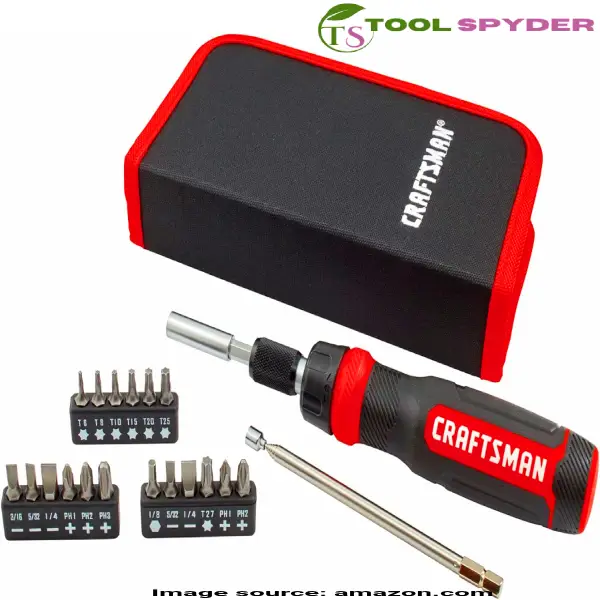
A screwdriver set is an indispensable hand tool for any home inspection toolkit. This set typically includes various screwdrivers of different types and sizes, which are essential for tasks that involve tightening and loosening screws. Whether you are dealing with simple repairs or complex installations, a comprehensive screwdriver set ensures you have the right tool for every screw type, be it flathead, Phillips, or Torx. The versatility and convenience offered by these sets make them a fundamental asset for any home inspector.
How To Use
When selecting a screwdriver from the set, it is crucial to choose the one that matches the screw type you are working with. This alignment ensures that you can apply the necessary torque without damaging the screw head or the surrounding material. To use a screwdriver, align its tip with the screw’s head, apply pressure, and turn it clockwise to tighten or counterclockwise to loosen. This simple yet precise action is vital for the maintenance and inspection of various home fixtures, from electrical panels to door hinges.
Type of Screwdriver Set
The price range for a screwdriver set can vary significantly, typically falling between $10 and $50. This range is influenced by factors such as the number of screwdrivers included, the materials used in their construction, and the presence of ergonomic features that enhance usability. Higher-end sets often offer more durability and comfort, which can be particularly beneficial for extended use during detailed inspections.
Final Thought
Adding a high-quality screwdriver set into your house inspection tools not only streamlines the inspection process but also helps in efficiently addressing minor repairs on the spot. This proactive approach can save time and prevent potential issues from escalating, ensuring that the property remains in optimal condition.
10. Tape Measure
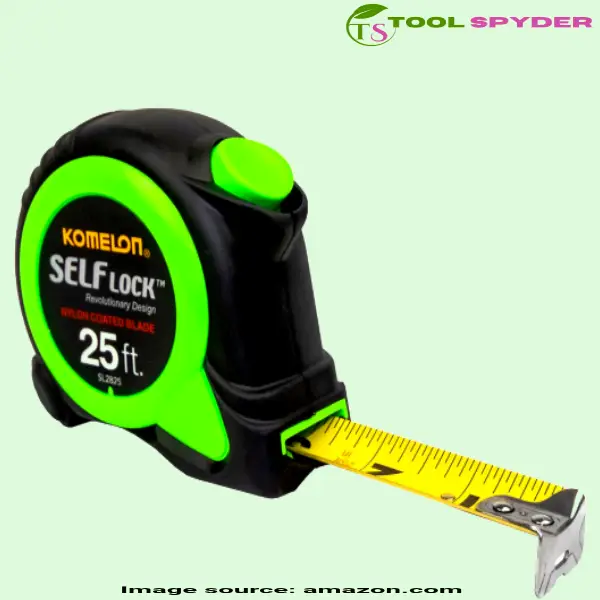
A tape measure is an indispensable tool in the arsenal of any home inspector. This measuring device offers the precision required to assess distances, dimensions, and sizes accurately, which is crucial for a thorough house inspection. It typically features a retractable ruler housed within a compact case, making it convenient to carry and easy to use.
How To Use
To operate a tape measure, simply pull out the tape to the desired length and lock it in place if necessary. Most tape measures come equipped with a locking mechanism to hold the tape steady, ensuring that measurements remain consistent and precise. The marked increments on the tape allow for readings in both metric and imperial units, catering to diverse measurement needs.
Type of Tape Measure
Available in a variety of lengths, tape measures can range from 10 feet to 100 feet, depending on the specific requirements of the inspection task. For standard home inspections, a 25-foot tape measure is usually sufficient, offering the flexibility to measure both large and small spaces with ease.
The price of a tape measure can vary widely, typically ranging from $5 to $30. This range depends on several factors, including the tape’s length, the quality of the material, and additional features such as magnetic tips or dual-sided printing. Investing in a durable and reliable tape measure ensures that it will withstand the rigors of frequent use during home inspections, providing accurate readings over time.
Final Thought
In the context of house inspection tools, the tape measure stands out as a fundamental instrument. Its ability to deliver precise measurements quickly and efficiently makes it an essential component of any comprehensive home inspection toolkit. Whether measuring room dimensions, checking the size of structural elements, or verifying the fit of fixtures and fittings, the tape measure is a versatile and reliable tool that facilitates accurate and effective inspections.
11. GFCI Tester
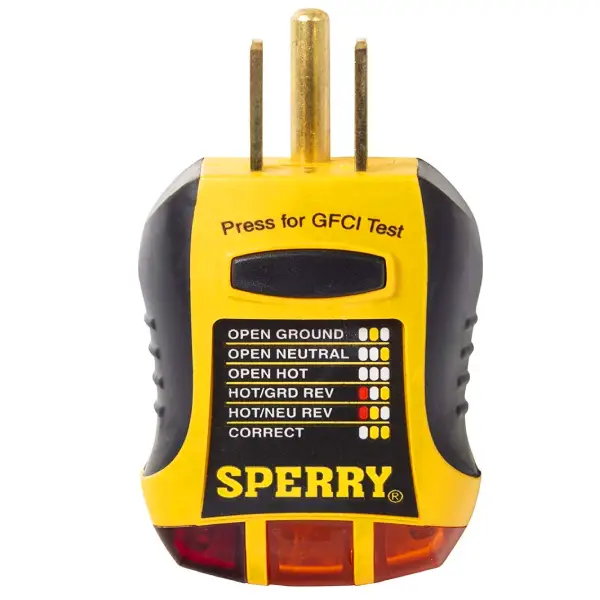
A Ground Fault Circuit Interrupter (GFCI) tester is an indispensable tool for any comprehensive house inspection. This electrical testing device ensures that GFCI outlets function correctly by detecting potential ground faults that could pose serious risks. Given the importance of electrical safety in residential environments, a GFCI tester is essential for inspecting outlets, particularly in areas prone to moisture, such as kitchens and bathrooms.
How To Use
The GFCI tester is a compact device equipped with indicator lights that provide immediate feedback on the outlet’s status. You can also learn HOW TO INSTALL GFCI OUTLET IN YOUR HOME YOURSELF
Typically, it features a small, handheld design that allows for convenient usage during inspections. The tester’s LED lights will display different patterns to indicate whether the GFCI outlet is wired correctly, has an open ground, or other potential issues. This simplicity makes it user-friendly, even for those who may not possess extensive electrical knowledge.
Type of GFCI Tester
As an essential house inspection tool, a GFCI tester is relatively affordable, with prices ranging from $10 to $30. Despite its low cost, it plays a crucial role in ensuring the electrical safety of a property. By incorporating a GFCI tester into your inspection toolkit, you can efficiently identify and mitigate electrical hazards, thereby promoting a safer living environment.
Final Thought
Using a GFCI tester is straightforward. To verify the functionality of a GFCI outlet, one simply needs to plug the tester into the outlet and observe the indicator lights. The lights will signal if the outlet is operating correctly or if there are wiring issues that need to be addressed. This immediate feedback enables inspectors to quickly determine the safety and reliability of the electrical system in a home.
12. Ladder
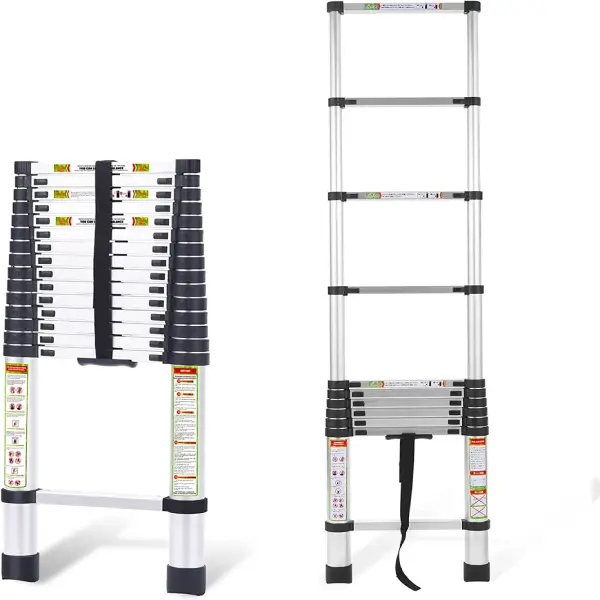
A ladder is an indispensable tool for conducting thorough home inspections, particularly when assessing areas that are difficult to reach, such as roofs and attics. This portable climbing tool ensures that inspectors can safely access elevated sections of a property, allowing for a comprehensive evaluation of its condition. The utility of a ladder in home inspections cannot be overstated, given that certain critical components, like roof shingles or attic insulation, require close scrutiny to determine their state of repair.
How To Use
When employing a ladder during a house inspection, safety is paramount. It is essential to set up the ladder on a stable and level surface to prevent accidents. Inspectors should also ensure that the ladder is fully extended and locked into place before climbing. Additionally, maintaining three points of contact—two hands and one foot or two feet and one hand—while ascending or descending is crucial for stability and safety.
Type of Ladder
As a piece of safety equipment, ladders come in various types and materials, each suited for different inspection needs. Common materials include aluminum, fiberglass, and wood, with aluminum being lightweight and durable, making it a popular choice for home inspectors. The design of ladders also varies, with options ranging from simple step ladders to more complex extension ladders that provide greater reach.
Final Thought
The price of a ladder can vary significantly based on its type, material, and height capacity. Generally, the cost ranges from $50 to $200, making it a relatively affordable yet vital investment for any home inspector. Opting for a high-quality ladder not only enhances safety but also increases the efficiency of the inspection process by enabling access to all necessary areas of the property.
13. Sewer Inspection Camera
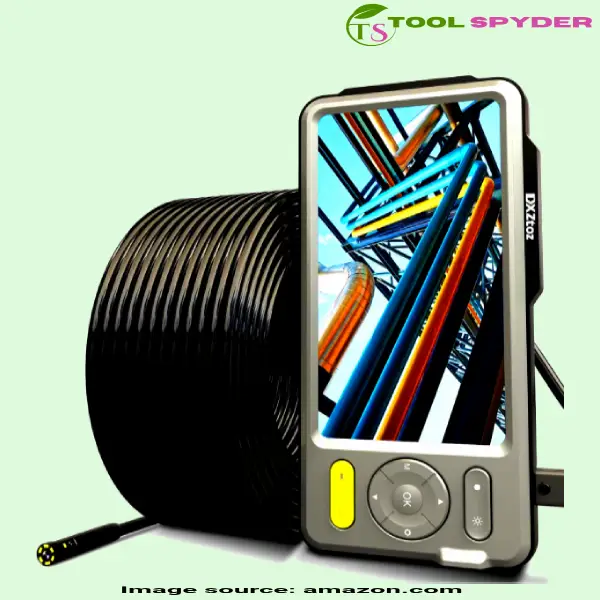
A vital tool in the realm of house inspection tools is the sewer inspection camera. This diagnostic device is specifically designed to provide a clear view inside pipelines, allowing inspectors to detect blockages, damages, and other potential issues that might not be visible through conventional means. Equipped with a camera attached to a flexible cable, it offers unparalleled access to confined and otherwise inaccessible areas within the plumbing system.
How To Use
Using a sewer inspection camera is relatively straightforward. The flexible cable, which can vary in length, is carefully inserted into the pipe. As the camera navigates through the pipeline, real-time footage is transmitted to a monitor, allowing inspectors to visually examine the interior condition of the pipes. This process helps identify potential problems such as clogs, cracks, and root intrusions, which can then be addressed promptly to prevent further damage.
Type of Sewer Inspection Camera
The price range for sewer inspection cameras varies significantly based on features and quality. Basic models start at around $100, suitable for simple inspections, while advanced models equipped with higher resolution cameras, longer cables, and enhanced features can cost up to $1,000 or more. Despite the initial investment, the long-term benefits of accurately diagnosing and addressing plumbing issues make it a worthwhile addition to any house inspection toolkit.
Final Thought
The sewer inspection camera stands out due to its diagnostic capabilities. It provides a non-invasive method to thoroughly inspect the plumbing system, thus minimizing the need for disruptive exploratory digging or disassembly of fixtures. This tool is particularly beneficial for identifying early signs of wear and tear, ensuring that homeowners can take preventive measures before minor issues escalate into major repairs.





